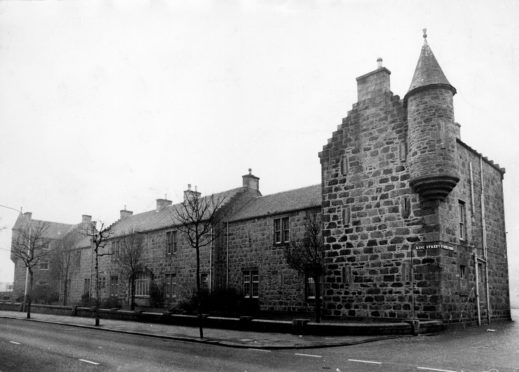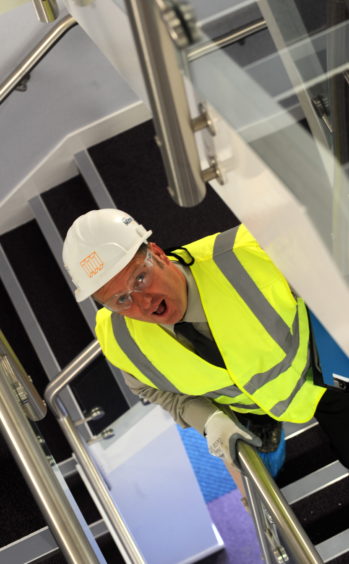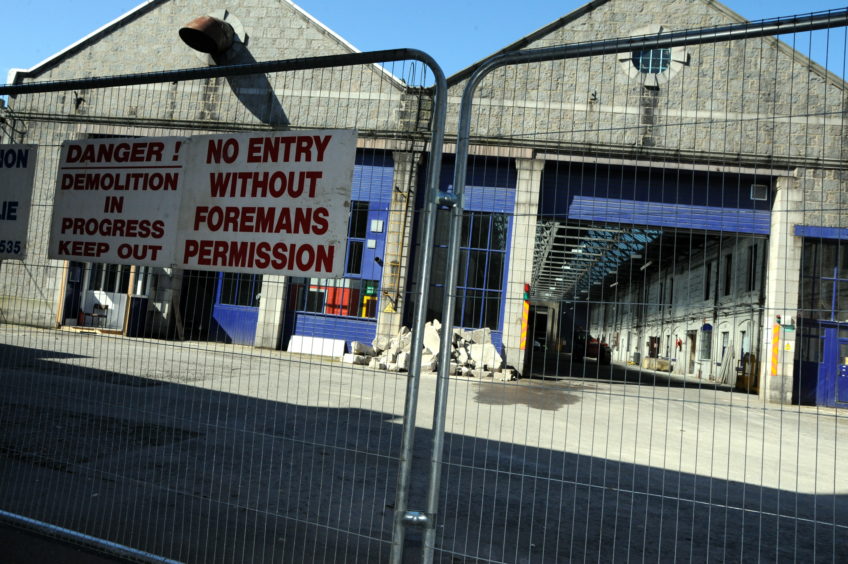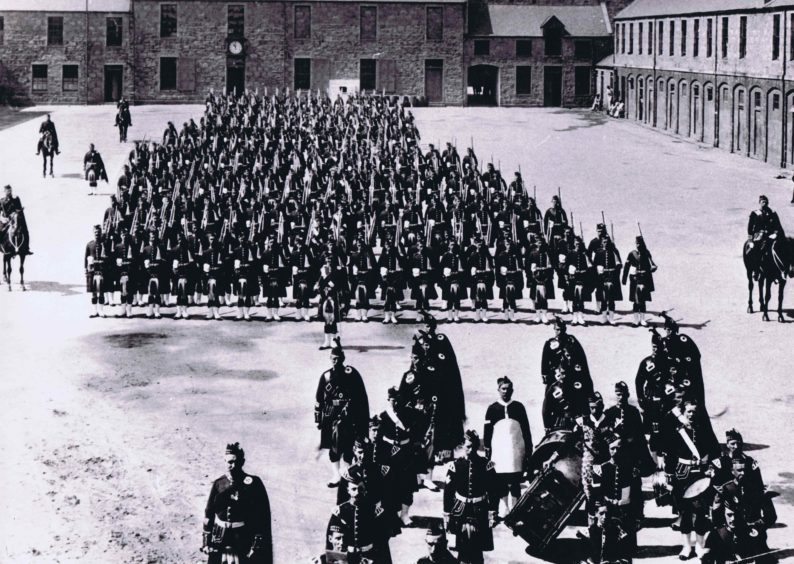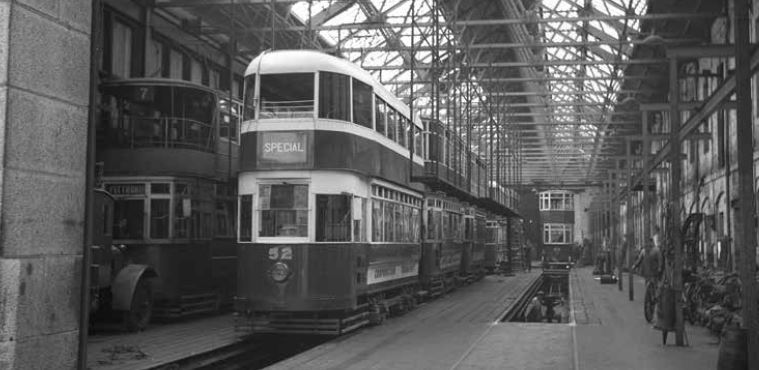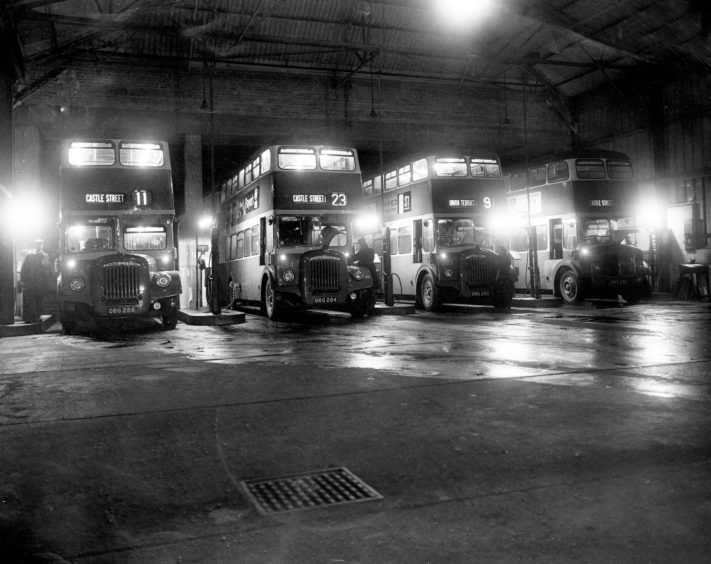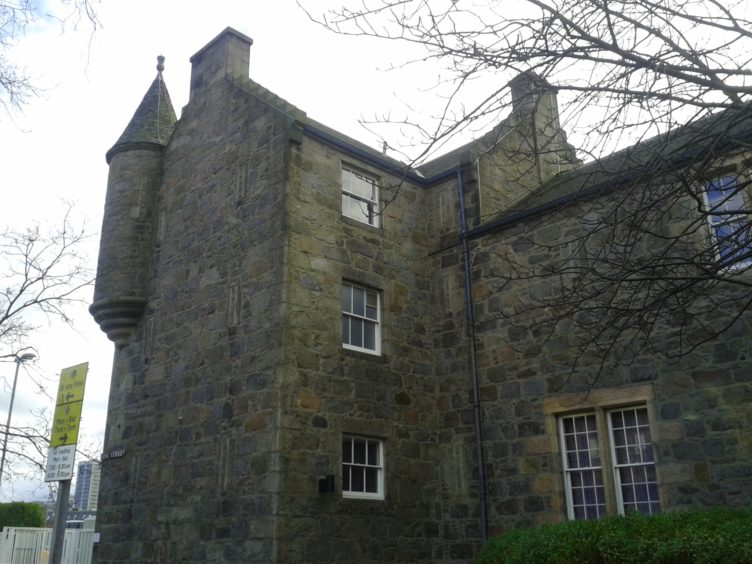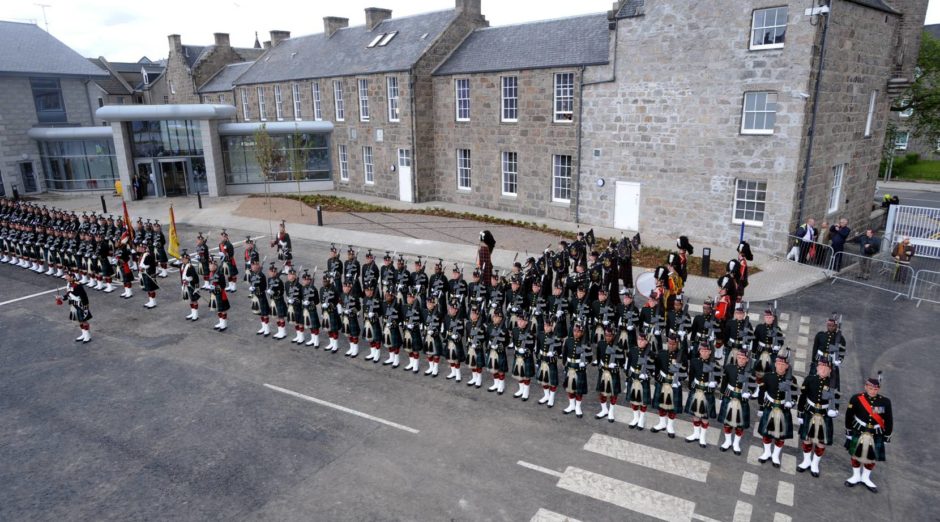Captain Beaton of the Gordon Highlanders knew very well the horrors of the Western Front.
He had spent long months convalescing from a serious head injury received in 1915 in the hellish mud and gore of the trenches, living through unimaginable fear and despair.
But as he made his recovery in Aberdeen, he was being prepared to return to active service, reporting for duty with the 3rd Battalion The Gordon Highlanders at King Street barracks.
I have spoken to people who have
claimed to feel an uneasiness and
eeriness about the building.
They are convinced there is a ghost there.”
It was here, in March 1918, he received orders to return to France and to the Front.
The next morning, he was found hanging in the Officer’s Mess in the south-east turret of the building.
The military authorities erased him from the records for his “cowardice”.
But Captain Beaton’s story doesn’t end there. Following his tragic death, there were reports of supernatural occurrences, sudden cold spots, weird noises – and of an officer in full regimental dress spotted roaming in the building.
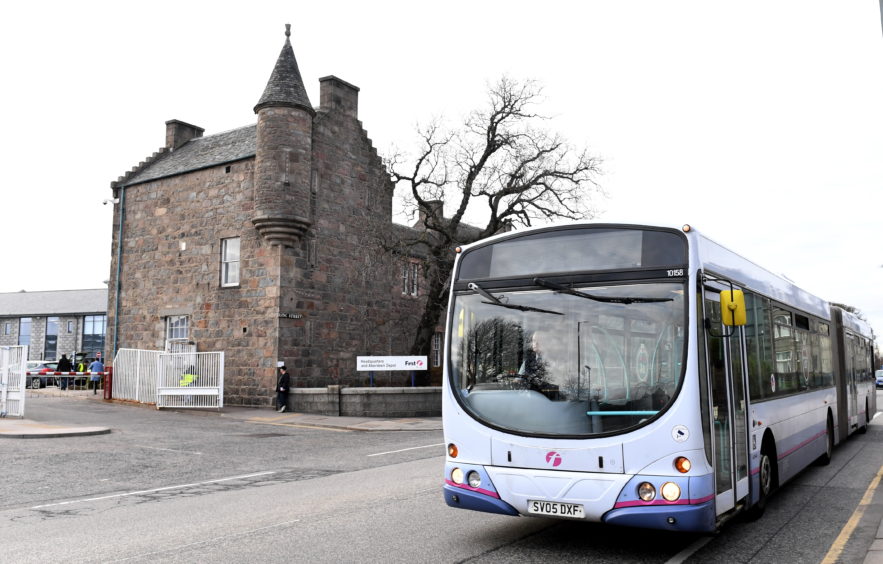
Today the former barracks is the headquarters and depot of Aberdeen’s global transport firm First Group – yet still the stories of the ghost of Captain Beaton live on.
“I have spoken to people who have claimed to feel an uneasiness and eeriness about the building. They are convinced there is a ghost there,” said Joe Mackie, chairman of First Group Heritage Trust, who worked at the King Street for decades.
Captain Beaton made the headlines 10 years ago, when the King Street building was being refurbished – and spooked workmen told of spine-tingling encounters.
Stewart Cameron, site manager for the developer Stewart Milne, told of his experience.
“It was a warm March evening and I was walking down the south stairs. I felt a freezing cold breeze rush by me. It was really freaky.”
He was not the only one to be freaked. Brick worker William Reid was also left shaken.
“I was in a room with other workers and all of a sudden a one-way sign that was leaning against a wall started to rattle. The windows were all closed and there was no breeze coming through.”
The Evening Express report of the ghostly goings-on in 2010 also said a length of rope was found in the rafters of the south turret during the refurbishment work.
But stories of Captain Beaton go back well beyond just a decade.
There is a tale of a young girl visiting her aunt when the barracks were converted to houses just after the First World War. She was playing in the loft and saw a soldier who suddenly vanished.
Mr Mackie, who was commercial director when he retired from First Group five years ago having worked with the company in its many guises for 52 years, said he had never felt anything supernatural, but said many people were left unnerved over the years.
“I remember in my days when I was there as a conductor and driver there was a canteen area that drivers and conductors who were waiting to go on to their buses or tram cars sat in. There were certain individuals who were pretty scared to go up there and sit alone. They were okay if there were a few of them, but they wouldn’t go up on their own because of this ghostly feeling.”
However fascinating the story of Captain Beaton, the chilling tales are really only a footnote in the history of the King Street barracks. It is one intertwined with the city, be it as a military base, or housing and, most famously, a hub for the city’s tram then bus network.
It is a story that has long absorbed Mr Mackie.
“The history of the building goes back to 1861, when the premises were built originally as military barracks for the Royal Aberdeenshire Highlanders… strange that a Shire organisation was building premises in the city,” said Mr Mackie.
“It was completed in 1862 and it was a full-blown military barracks. If you look at the building still on King Street and can imagine both sides of that and across the far end with different buildings, so the whole thing formed a proper quadrangle in the middle.
“There are old photographs of the soldiers on parade and on horseback actually on parade in that quad area.
“I think the atmosphere would have been quite stunning, when you think of the soldiers who were there and doing their training. It must have been quite a sight to have about 500 soldiers barracked there at one stage.”
However, the barracks had barely been completed when an outbreak of typhus in the Gallowgate area saw the soldiers moved to Fort George to complete their training. In 1880, an extra 300 men were added to the regiment and in 1882 it became the 3rd Battalion The Gordon Highlanders.
It was from King Street at the turn of the century the Highlanders were dispatched to Cape Town to fight in the Boer War. But by 1912 Aberdeen Council had taken over the barracks, planning to have a major depot, garage workshop for the trams.
“With the outbreak of the war in 1914 that was all put on hold and the premises once again became military occupied,” said Mr Mackie.
“Post war, the barracks were converted to flats for emergency housing, because there was a general lack of accommodation in the city,” said Mr Mackie.
“It then became the centralised depot for the tramcars and there were buses there eventually,” said Mr Mackie.
All that remained was the front
of the building, which is still there,
and the side of the barracks
which went up St Peter Street.”
“Essentially all the tram cars were based there. As for the military buildings, one side and the back was demolished to make it more useable as a garaging and maintenance facility.
“All that remained was the front of the building, which is still there, and the side of the barracks which went up St Peter Street.”
All the while, the demand grew from the city’s tram and bus fleet and in 1951 an RAF hangar from Greenock was built at the site to maintain the vehicles. Trams were phased out in 1958 and King Street became the care hub for Aberdeen Corporation’s 230 buses.
Further changes followed, with Grampian Regional Transport coming into being in 1975, then becoming GRT Ltd in 1986 following de-regulation. A management and employee buy-out was completed by Moir Lockhead and his team, including Mr Mackie, in 1989.
Following a merger with English bus company Badgerline, First Bus, later First Group came into being, becoming a global transport company.
During all of this the barracks building remained and was refurbished into modern offices in 2010 at the same time a state-of-the-art new bus depot and modern HQ for First Group was built, sweeping away the final side of the old barracks on St Peter Street.
The surviving barracks building has a special place in the heart of many Aberdonians, said Mr Mackie.
“I supposed it’s because the building on King Street is so unique and has its own beauty.
“It has two lovely turrets and it has the big gate which would have been the original entrance. You can just imagine the horses and soldiers going into the barracks there.”
The bright, modern facilities were opened by the Princess Royal in 2010 – which gave Mr Mackie the chance to fulfil a long-held vision.
“Before I retired I always had this ambition to get the soldiers back to King Street. I was fortunate to do that on two occasions, 2010 and 2014, to get the 4 Scots regiment to come back to visit the premises.
“I had them lined up inside the bus depot with the barracks as the backdrop. I found that quite moving to get the soldiers back in there and get the pipe bands playing. Getting them to parade at King Street completed the circle as best I could.”
As for Captain Beaton, he seems to have quietened down of late – perhaps Mr Mackie’s salute of honour to the military history on King Street has soothed his troubled soul.
